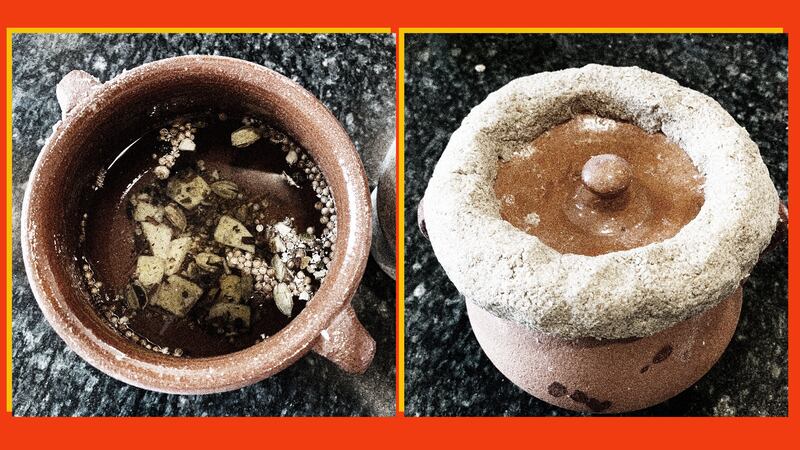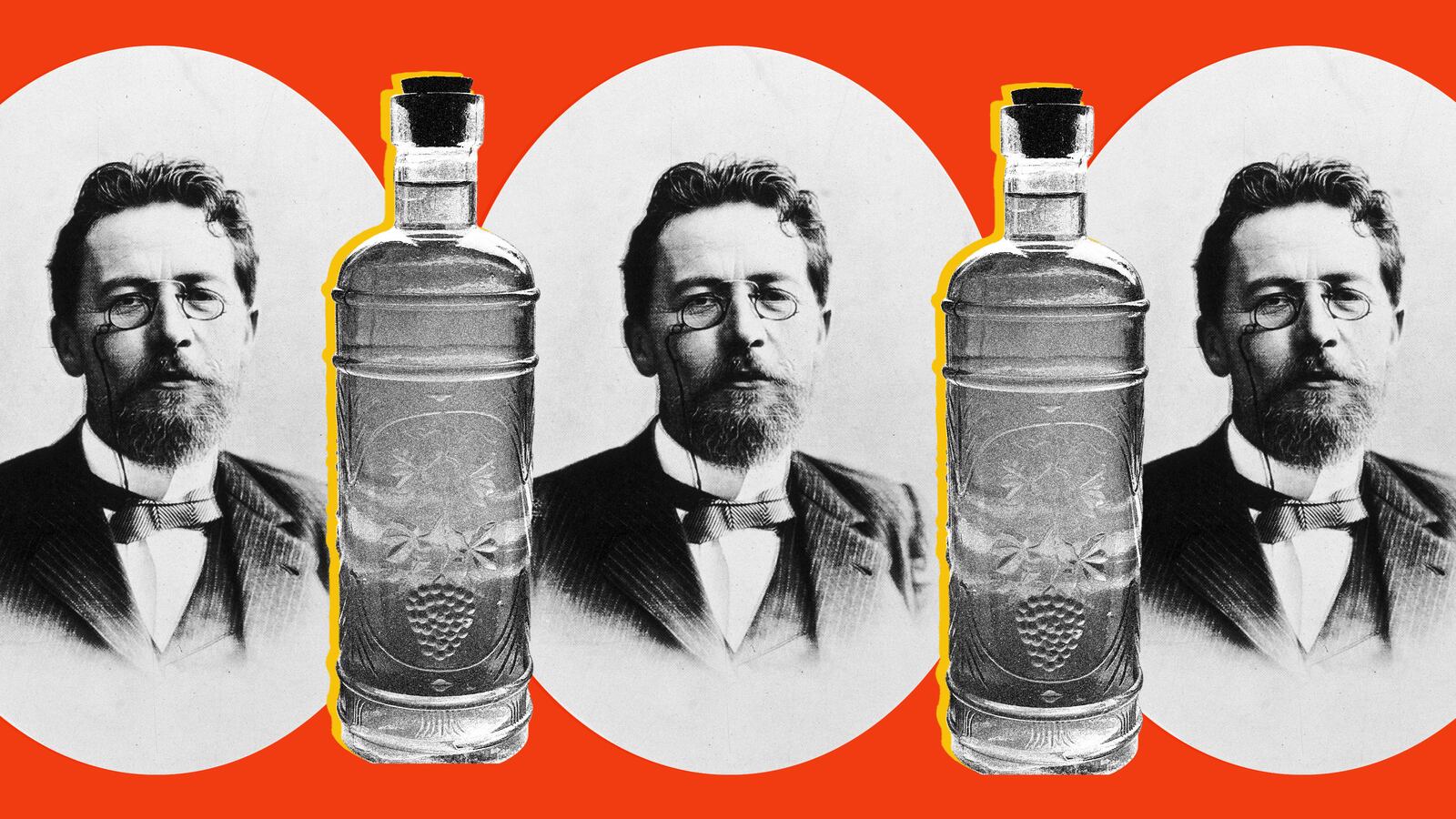My introduction to the wild, wild world of old Russian drinks came not from bars but from books, where I first encountered words that left me equally bewildered and intoxicated.
Take the curiously named kislye shchi in Nikolai Gogol’s Dead Souls. The name translates literally as “sour cabbage soup,” which made no sense to me in its context as a sleep tonic for the novel’s hero, Chichikov. Only after puzzling over its other common translation as “a bottle of pickles” did I discover that this tonic is none other than a sparkling malt beverage, one that the aristocracy once quaffed like champagne.
A second discovery occurred courtesy of another great Russian writer, Anton Chekhov, in his short story “The Siren,” where the narrator waxes poetic about something called zapekanka. In modern usage, that word refers to a baked casserole—comfort food in the form of mashed potatoes and meat, or kasha and mushrooms, or any number of other combinations, none of them drinkable. But that doesn’t fit with Chekhov’s description, where he uses the word zapekanochka, an affectionate diminutive form:
<p>“After the roast you feel full, and you fall into sweet oblivion,” continued the secretary. “Your body feels good, and your soul is transported. For even greater delight you can drink about three shots of <em>zapekanochka</em>…domestic, homemade <em>zapekanochka</em> is better than any champagne.”</p>
I’ve never come close to being transported from a casserole, so I had to dig deeper. Only then did I learn that zapekanka can also refer to a once-beloved spiced vodka that is baked in the oven to intensify the infusion process. Heady stuff indeed!
Until 2020, when it finally saw the light, the United States defined vodka as “neutral spirits so distilled, or so treated after distillation with charcoal or other materials, as to be without distinctive character, aroma, taste, or color.” But the Federal Government’s official description still defines vodka as neutral. If you, too, think of this spirit as colorless and odorless, zapekanka will make you think again.
This style of vodka is a gorgeous shade of amber and redolent with spices (though there is also a fruity summertime version prepared with fresh berries). Originally zapekanka was made in a massive, wood-burning, Russian masonry stove after it had been fired for bread baking. Some old recipes call for baking the vodka at a high temperature just after the bread has been pulled from the oven, while others recommend a gentler infusion after the oven has cooled down to a temperature suitable for culturing dairy products. Traditional recipes recommend using an earthenware pot and sealing the lid tightly with rye dough. Heavy glass bottles were also sometimes used, in which case the entire bottle was encased in dough.

N.P. Osipov’s The Old-fashioned Russian Housewife, Housekeeper, and Cook, published in Saint Petersburg in 1790, offers a recipe for a potent drink. Its proportions also suggest how much Russians love their vodka, as it calls for an entire vedro, or bucket, of vodka—the equivalent of 3.25 gallons. To intensify the spicy profile of the finished drink, Osipov begins with a base of anise-infused vodka. He then adds an astonishing number of flavorings: cinnamon, cloves, cardamom, pepper, ginger, bitter orange peel, star anise, anise, coriander, mastic, caraway, saffron, rosemary, wild pepper, mace, mustard, dill seed, styrax (an aromatic resin), cubeb and 12 wheat or rye berries. (It sounds very similar to some modern gin recipes that call for a whole spice rack of botanicals.)
The recipe instructs the cook to leave the vodka to infuse overnight in the oven. After removing it the next day, it is placed immediately in another hot oven after the bread has finished baking. This process is repeated for a full 12 days to yield what must be an exceptionally powerful drink, one that could transport you all the way to Australia.
Later recipes, which presuppose smaller kitchens and fewer staff, generally begin with lemon-flavored vodka and are considerably more moderate in their infusion methods, usually calling for the process to be repeated over a period of only three days instead of 12. These later recipes also call for the addition of honey or sugar after the vodka has infused, but I find that the warm spices already make the vodka sufficiently sweet. In any case, unlike other infused vodkas, zapekanka—whether sweetened or not—is served as an aromatic digestif after the meal instead of as an appetite-piquing drink beforehand.
Like Gogol’s kislye shchi, zapekanka has largely disappeared from Russian tables, which is a shame, especially since it’s surprisingly easy to make at home. The streamlined version I offer here is simple to make and requires no wood-burning Russian stove. My recipe is very cardamom forward, if only because I love cardamom, but you should feel free to use fewer pods or to play with any combination of spices that you prefer.
Just try to wait at least a week before serving the zapekanka to allow its flavors to mellow.
INGREDIENTS
For the vodka:
- 1 bottle (750-ml) High-quality vodka
- .25 tsp Black peppercorns
- 4 Large allspice berries
- 1-inch piece Cinnamon stick
- 1 tsp Coriander seed
- 10 Whole cardamom pods
- .25 tsp Coarsely cracked nutmeg
- 1 tsp Dried bitter orange peel
- 1.5 inch Chunk fresh ginger root, peeled and sliced
For the dough:
- 1.5 cups Rye flour
- .5 cup Water
DIRECTIONS
- Pour the vodka into a small (1-quart) earthenware casserole with a lid. (I use a bulbous bean pot.)
- Slightly crush the peppercorns, allspice, cinnamon stick, coriander seed and cardamom pods in a mortar and pestle—do not grind them. Crack a whole nutmeg with a mallet to break off some small, coarse shards. Add all of these spices to the pot, along with the orange peel and fresh ginger. Cover with the lid.
- Preheat the oven to 175ºF. Make a stiff, slightly sticky rye dough by mixing together the flour and water in a small bowl. Press the rye dough all over the edges of the lid to seal it tightly. The dough should be about one-and-a-half inches thick.
- Place the pot in the preheated oven and immediately turn off the heat, leaving the vodka in the oven to infuse for eight hours or overnight (exact timing isn’t crucial). Remove the pot from the oven and let the vodka stand at room temperature for another eight hours.
- If any cracks appear in the dough from the temperature change, repair them with a little newly made dough. Then repeat the process, letting the vodka infuse for another eight hours in a warm oven and again for eight hours at room temperature.
- Line a fine-meshed sieve with cheesecloth and place it over a bowl. Remove the dough seal from the pot and strain the vodka through the sieve, then pour it into a clean bottle and close with a tight-fitting cap. Store the zapekanka in a cool, dark place for up to several years.








